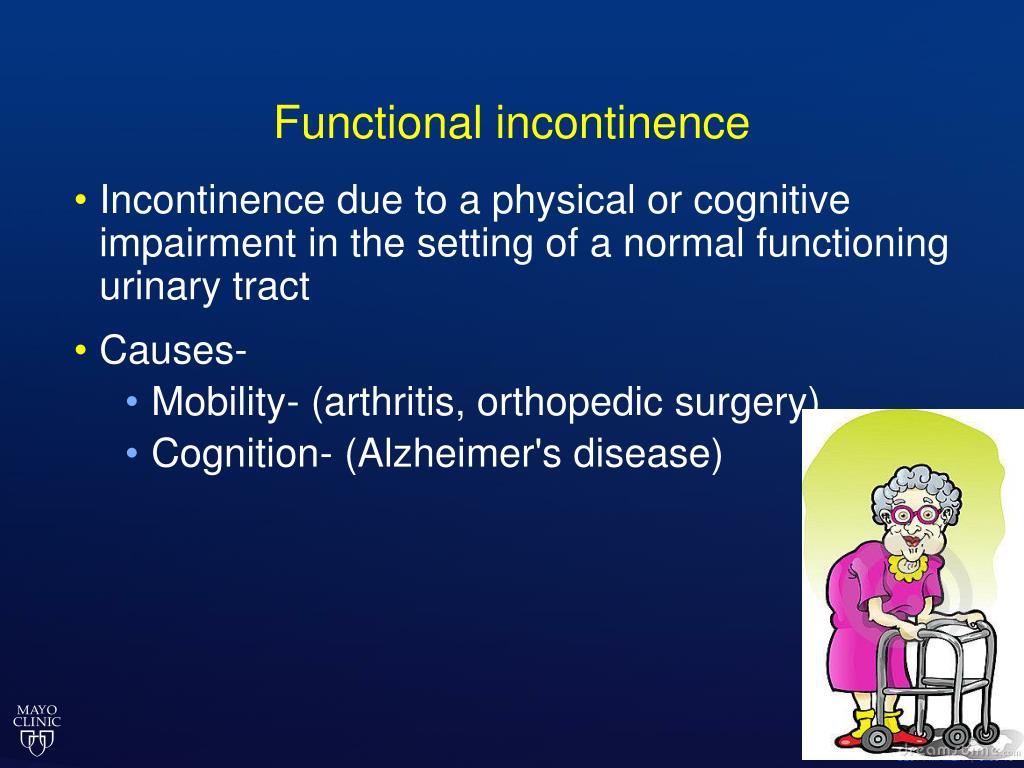

Prompted, timed, or scheduled voidingįor patients with dementia, this method works well. While doing so, focus your attention on something else until the urge to urinate passes. If an urge strikes remain steady when standing or sitting. Bladder trainingīy planning the time between restroom visits, you can control incontinence. People with arthritis should use easy-to-pull adaptive arthritic apparel instead of difficult-to-use zippers and buttons. You can manage functional incontinence by wearing the appropriate attire. Additionally, this will lessen incontinence occurrences. Access for your loved one will be improved by making a home elder-friendly. Additionally, they offer a practical means of urinating when the desire strikes. Boost accessibilityīuilding a toilet closer to their senior loved one’s room is a common solution that most families use. Then start treatment in the event of a medical issue such as arthritis, dementia, or any other disease. Your doctor may suggest additional tests performed by a specialist for correct diagnosis. The disease that leads to incontinence must first be treated. It is crucial to discuss with your doctor your incontinence if you have strong bladder control otherwise. Treatment for Functional Incontinence Proper diagnosisĪ correct diagnosis is the first step in any sort of incontinence treatment.

This indicates that a person’s mental illness hinders them from acting rationally. These include multiple sclerosis, severe depression, and dementia. Emotional/ mental barriersįunctional incontinence occurs due to a number of illnesses. Also, these arise due to neurological conditions like arthritis, joint pain, back pain, spine injuries, or poor mobility when using a wheelchair. These can develop as a result of illnesses like Parkinson’s disease or multiple sclerosis (MS). So, these problems can be divided into two groups: Physical barriers They, unfortunately, cannot make it to the bathroom in time due to a problem. And the person is fully conscious even after the brain begins to signal a desire to urinate.

Functional incontinence, on the other hand, is a condition in which the system functions flawlessly. This means that pee can leak out even before the bladder is full. The majority of incontinence sufferers have little control over their bladders. Passing pee for whatever cause before using the restroom.Functional incontinence is the term used by doctors to describe the loss of control over the bladder or bowel brought on by a physical or emotional barrier. This is but one situation that can result in incontinence.Īlthough most people think of incontinence as a loss of bladder control, physical and emotional issues also play a significant role in the issue. Before they can reach the bathroom due to the pain and limited mobility, they eventually lose pee. The issue emerges when they want to get out of bed as their bladder functions fine. Functional IncontinenceĬonsider an older loved one of yours who has arthritis and gets the urgent impulse to use the restroom. Depending on the circumstances the sufferer is experiencing, functional incontinence can take many different forms. Instead, it was a failure to arrive at the bathroom in time. The problem for those with functional incontinence is not bladder control. Functional incontinence is a condition in which someone experiences uncontrollable urination as a result of physical or emotional distress. The issue typically develops as a result of bladder issues. In today’s environment, adult incontinence is a major medical issue.


 0 kommentar(er)
0 kommentar(er)
